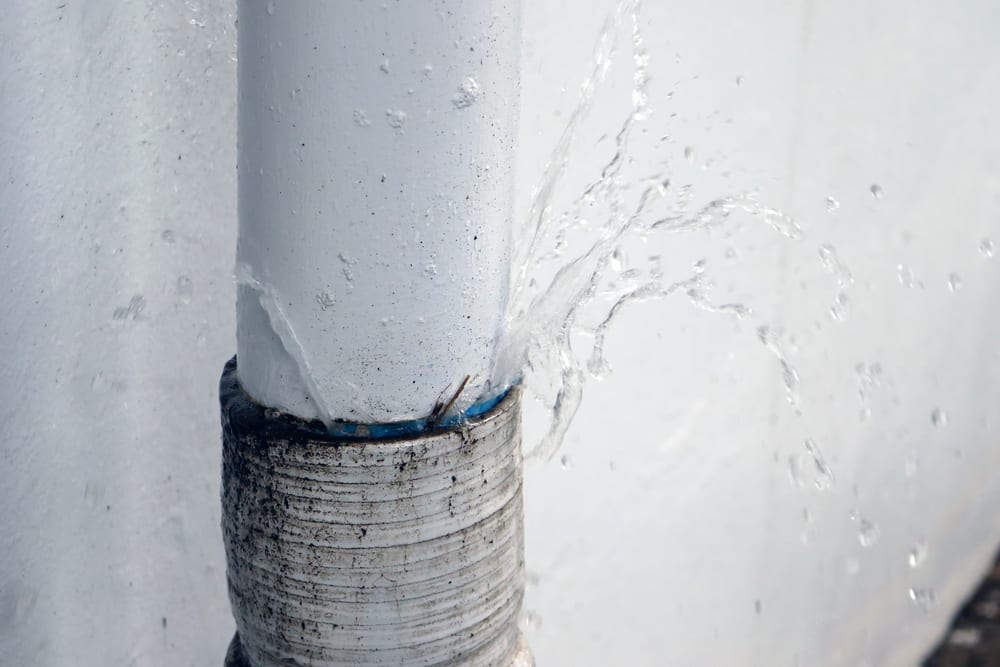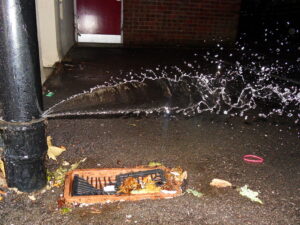Identifying and Quickly Repairing a Burst Pipe: A Guide
Identifying and Quickly Repairing a Burst Pipe: A Guide
Blog Article
Just about every person has their private way of thinking on the subject of How to Prepare for Your Dishwasher Installation.

A ruptured pipeline is a significant emergency; you can just stand as you view water you pay a lot to reunite with the earth. In worse cases, you notice a swimming pool on your kitchen area floor, which is a fantastic journey risk, specifically if you have youngsters around. If the pipe that burst remained in your walls, trouble: you may require to paint that entire section.
How can a disaster like a burst pipeline be protected against and managed? Well, by listening to your expert emergency plumbings as well as following these guidelines.
Just how do I know when my pipelines have ruptured?
Rising and fall water pressures
Pipes do not simply burst in a day. You might have discovered that your cooking area tap or shower doesn't run quickly when you transform the tap. It might stop briefly for a couple of seconds and afterwards blast you with more pressure than common.
In other circumstances, the water might seem normal initially, after that decrease in pressure after a few secs.
Damp wall surfaces and water discolorations
Before a pipe bursts, it will leakage, the majority of times. If this persistent leaking goes unnoticed, the leakage might graduate into a large wound in your pipeline. One easy method to prevent this emergency is to look out for damp wall surfaces advertisement water discolorations. These water discolorations will lead you right to the leak.
Puddles under pipes as well as sinks
When a pipe ruptureds, the outflow forms a puddle. It may show up that the pool is expanding in size, and also despite how many times you mop the puddle, in a couple of minutes, there's another one waiting to be cleaned up. Usually, you might not have the ability to map the puddle to any noticeable pipelines. This is a sign to call an expert plumber.
Untraceable leaking sounds
Pipeline ruptureds can occur in the most unpleasant areas, like within concrete, inside wall surfaces, or under sinks. When the house goes quiet, you may be able to hear an aggravatingly relentless leaking sound. Also after you've examined your shower head and cooking area faucet, the leaking might proceed.
Precious visitor, the leaking may be originating from a pipeline inside your wall surfaces. There isn't much you can do concerning that, other than inform a professional plumber.
Turn off the Water
When water ices up, it increases in quantity by about 9 percent. And it increases with tremendous force: The stress inside pipelines may go from 40 pounds per square inch to 40,000 psi! No pipe can hold that much pressure, so it bursts. The break might take place where the ice forms, yet more frequently, it happens where water stress discovers a weak spot in the pipeline. That might be inches or perhaps feet from the frozen location. Discover the water shutoff valve and switch off the water to stop even more damage. You might also require to turn off the electrical power as well, depending on where the leakages takes place as well as exactly how large it is.
Polluted water
Lots of people assume a burst pipe is a one-way electrical outlet. Quite the contrary. As water drains of the hole or gouge in your plumbing system, pollutants locate their way in.
Your water may be polluted from the source, so if you can, inspect if your water tank has any type of problems. Nevertheless, if your alcohol consumption water is provided and detoxified by the city government, you need to call your plumber quickly if you see or smell anything amusing in your water.
What do I do when I detect a burst pipeline?
Your water meter will continue to run even while your water wastes. To decrease your losses, discover the primary controls and transform the supply off. The water pipe are an above-ground framework at the edge of your building.
How to Fix & Detect a Leaking Pipe
How Do I Know if a Pipe is Leaking?
Leak detection tests can help you determine if your pipe has a leak. Even if you don’t see an apparent leak, you should still conduct leak detection tests regularly to save water and money—and prevent major damage to your home.
Water meter. It can be helpful to figure out what your usual water meter usage numbers are and then monitor them regularly. To monitor your meter, first, turn off all water faucets in your home. Check the meter and write down the numbers. In a few hours, check the meter again. If the numbers have changed, you have a leak. Water gauge. Use a water gauge to test your water pressure. Your showerhead should produce a certain amount of water pressure based on its model and design. If the pressure is lower than it is supposed to be for that specific showerhead, your home likely has a leak. Puddles. Look inside your bathroom, laundry, and kitchen sink cabinets. Puddles around the cabinets or around toilets, tubs, showers, and washing machines indicate the presence of a leaking pipe. You may also notice loose tiles, peeling or flaking paint, or mold caused by water accumulation. Napkin test. Even if you don’t see any puddles, you may still have a leak. You can test for water leaks in the bathroom, laundry, and kitchen by wiping below-sink connections with a napkin, paper towel, or piece of toilet paper. If it becomes damp, you probably have a leaking pipe under the sink. Discolored walls. Walls that are discolored—usually with brown or yellow stains—or bulging might mean that they have been impacted by water damage caused by a leaking pipe. Smell. A leaky pipe will create sitting water, and over time, that water may develop a musty smell. If your home smells musty, but you can’t locate the source, it may be due to a leak. Steps for Fixing a Leaking Pipe
A leaky drain can be remedied by tightening the pipe base, replacing the drain seal, caulking the rim, and tightening the pipe nut. Similarly, a leaking toilet pipe can be treated by tightening the packing nut. You may also need to replace the valve. A leaky faucet may just need tightening or replacement of the washers. If that doesn’t work, consider replacing your faucet. If your pipe has a hole in it, you may want to use a pipe leak sealer or pipe leak tape. This quick fix for water pipe leaks can also temporarily fix a copper pipe leak. https://www.ahs.com/home-matters/quick-tips/how-to-tell-if-pipes-are-leaking/

As a serious reader on How to Install and Connect a New Dishwasher, I imagined sharing that chunk was a good thing. So long as you enjoyed reading our article if you please don't forget to pass it around. Thanks a lot for your time. Don't forget to come visit our site back soon.
Contact for assistance. Report this page